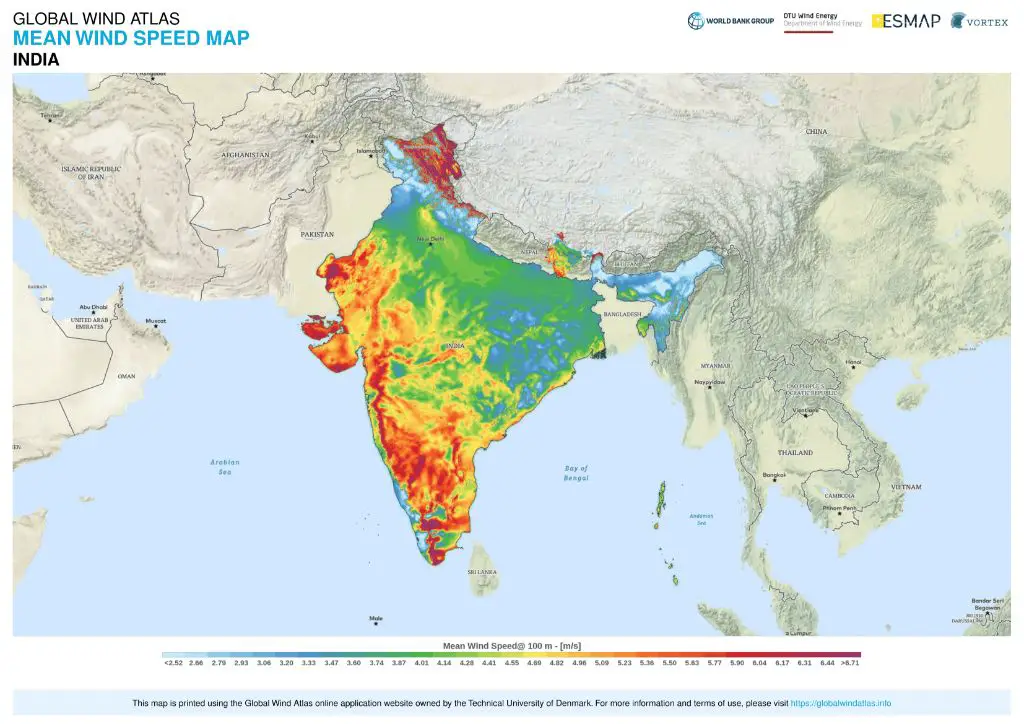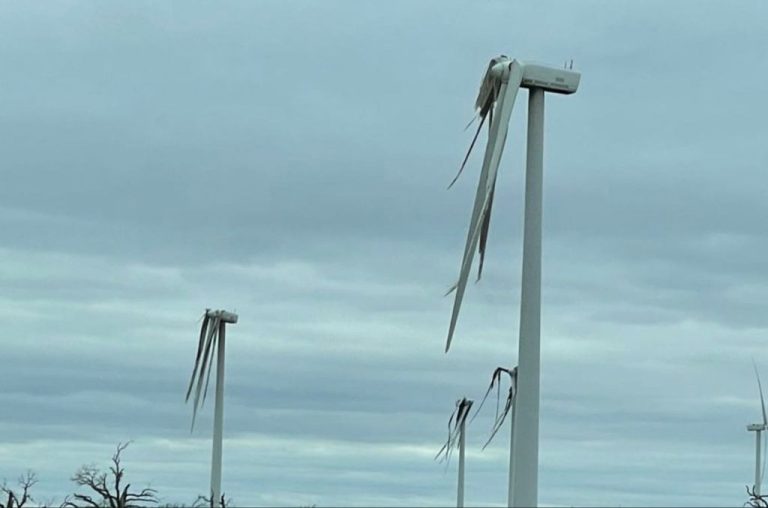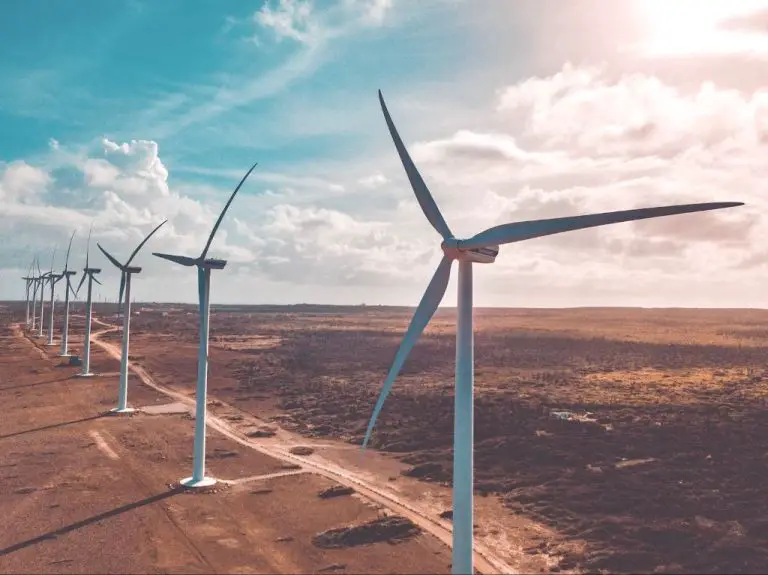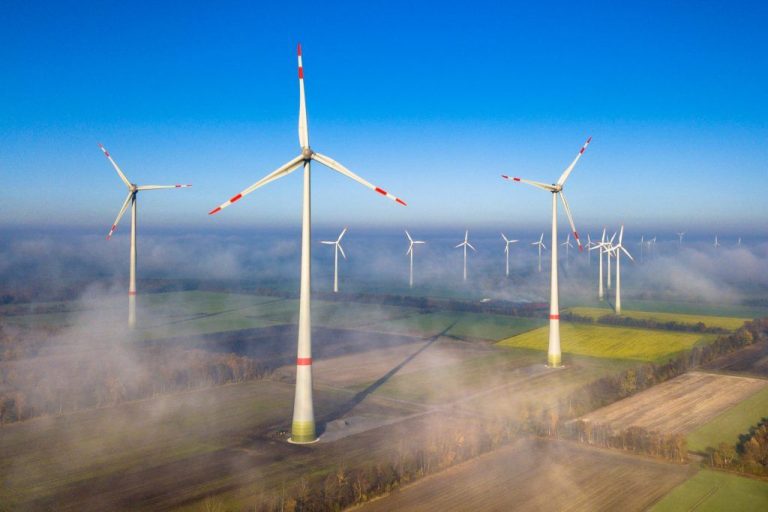Is India A Wind Superpower?

Wind energy refers to the process of harnessing the wind to generate electricity using wind turbines. A wind superpower is a country that has abundant wind energy resources and has significantly invested in wind power capacity and technology to become a global leader in wind energy production and utilization.
To qualify as a wind superpower, a country must have ideal wind conditions, a robust electricity grid to handle variable wind power, policies that promote wind energy growth, major wind turbine manufacturers, and a skilled workforce to support the wind industry. Wind superpowers rank among the highest worldwide in total installed wind power capacity.
India’s Wind Power Capacity
India has seen tremendous growth in installed wind power capacity over the past two decades. As of March 2023, India had an installed wind power capacity of 42,633 MW, according to the Wikipedia article on wind power in India. This makes India the fourth largest installed wind power capacity globally, after China, the United States, and Germany.
Wind power capacity in India has grown rapidly from just 1,456 MW in 2001 to over 42,000 MW in 2023. Some key statistics on India’s growth of wind power capacity include:
- In the fiscal year 2022-23, India added 2,536 MW of new wind power capacity, crossing the 40 GW milestone.
- Wind power accounts for nearly 10% of India’s total installed power generation capacity.
- Tamil Nadu state has the highest installed wind power capacity at 14,515 MW as of March 2022.
With supportive government policies and abundant wind energy resources, particularly in coastal and hilly regions, India is expected to continue adding significant wind power capacity in the coming years. The Indian government has set an ambitious target of achieving 140 GW of installed wind capacity by 2030.
India’s Wind Energy Potential
India has one of the largest wind energy potentials in the world. According to the Global Wind Energy Council, India’s onshore wind potential is estimated at 695.5 GW at 120 meters hub height [1]. The Indian Wind Turbine Manufacturers Association (IWTMA) estimates the potential to be even higher at 2,006 GW at 120 meters hub height. This is due to India’s long coastline and large tracts of land with good wind speeds.
In addition to onshore wind, India also has a significant offshore wind potential. The National Institute for Wind Energy (NIWE) has estimated the offshore wind potential within the Exclusive Economic Zone (EEZ) of India to be around 70 GW [2]. However, offshore wind development in India is still at a nascent stage with limited installed capacity. The government has set an offshore wind target of 5 GW by 2022 and 30 GW by 2030 to tap into this enormous potential.
With high quality wind sites, especially in states like Tamil Nadu, Gujarat, Maharashtra, Karnataka and Andhra Pradesh, India is well-positioned to continue scaling up its wind power capacity and become a global wind energy leader.
Growth of Wind Power in India
India has seen remarkable growth in wind power capacity over the past few decades. Some of the key policies and incentives that have driven this growth include:
The Electricity Act of 2003 promoted renewable energy generation by mandating state electricity regulators to set minimum percentages for renewable energy purchase by distribution companies. This policy helped provide a strong market for wind power projects (Kumar, 2022).
Introduction of Generation Based Incentives (GBI) in 2009, which provided financial incentives for wind power generation. This boosted investor interest and led to a surge in wind capacity additions (Chaurasiya et al., 2019).
Accelerated depreciation of 80% in the first year for wind power projects made investments more attractive. This incentive was critical for boosting the wind sector (Sharma, 2019).
Introduction of Renewable Purchase Obligations and Renewable Energy Certificates further increased demand for wind energy from utilities and industries.
Setting up of the National Institute of Wind Energy in 1998 gave an institutional push and helped create skilled manpower for the industry.
Major Wind Energy Companies in India
India has emerged as one of the global leaders in wind energy, with several major companies involved in wind turbine manufacturing and wind farm development. Some of the leading wind energy companies in India include:
Suzlon – Founded in 1995, Suzlon is one of the pioneers and largest wind turbine manufacturers in India with over 18,000 MW of installed wind energy capacity. It has manufacturing facilities in India, China and the US.
Inox Wind – A major wind energy company that manufactures wind turbine generators and constructs wind power projects. Inox Wind has installed over 3,600 wind turbines across India.
Siemens Gamesa – Global wind turbine company with major manufacturing facilities in India. It has installed over 7,500 wind turbines accounting for nearly 8,800 MW in India as of 2018.
Vestas – Danish wind turbine maker Vestas is one of the technology leaders globally and has been involved in the Indian market since the 1990s. It has installed around 5,500 wind turbines in India.
GE Renewable Energy – The renewable energy division of GE has installed over 3,000 wind turbines with a total capacity of nearly 5,500 MW in India. Its wind turbine manufacturing facility is located in Pune.
Wind Energy Employment in India
The wind energy sector in India has driven significant job creation and employment opportunities. According to estimates, the wind power industry employs over 60,000 people directly. When indirect and induced jobs are also accounted for, the total employment from the wind energy sector reaches around 90,000 jobs.
Most of the direct jobs are in the manufacturing of wind turbine components, construction and installation of wind farms, operations and maintenance, project development, logistics, and business support services. Large wind turbine manufacturers like Suzlon and Gamesa have factories in India employing thousands of workers. Smaller component suppliers also create local manufacturing jobs.
The wind sector provides employment opportunities to engineers, technicians, construction workers, drivers, project managers, and business professionals. Field technicians are required for the operation and maintenance of wind farms, especially in remote rural areas. As the share of wind energy grows in India, the sector is expected to generate even more jobs going forward.
Wind Power Costs
Wind power costs have declined substantially over the past decade in India. The installed costs of wind projects have come down from over Rs 7 crore per MW in 2009-10 to around Rs 4 crore per MW in 2019-20. The levelized cost of electricity (LCOE) generated from wind has declined from Rs 6-7 per unit to Rs 2.7-3.2 per unit during the same period.
Several factors have contributed to the reduction in wind energy costs in recent years. These include:
- Improved wind turbine technology resulting in increased capacity factors
- Economies of scale achieved due to larger size of wind farms
- Competitive bidding leading to discovery of lower tariffs
- Wider availability of low-cost financing
With the growth in size of wind turbines and optimizing wind farm designs, the capacity utilization of wind projects has improved substantially. This has helped bring down the costs through better utilization of the assets. The competitive bidding process initiated by the government in 2017 has also enabled discovery of lower wind tariffs of around ₹2.7-3.2 per unit.
The wind industry expects the costs to further reduce with improving capacity factors, declining equipment costs, larger project sizes and availability of low-cost financing. This will help make wind power even more cost competitive.
Grid Integration Challenges
Integrating large amounts of wind energy into the electrical grid poses some challenges. Two main issues are curtailment and transmission constraints.
Curtailment refers to the practice of reducing the output of wind farms from what they could otherwise produce given the available wind resources. This occurs when the power system cannot absorb all of the power being generated, often due to insufficient transmission capacity. India has experienced high levels of curtailment, especially in states like Tamil Nadu and Rajasthan where wind capacity has grown rapidly (Source).
Transmission constraints also pose a major barrier, as wind farms are often located in remote areas far from load centers. Significant investment is needed in transmission infrastructure to alleviate congestion and allow power to be delivered (Source). Upgrading the grid and enhancing interregional transmission capacity will be critical for supporting India’s growing wind industry.
Comparison to Other Major Markets
India compares favorably to other major markets like China and the United States when it comes to wind power development. According to Wikipedia, China had over 40% of the world’s wind power capacity with 329 GW as of 2021. The United States had just 14 GW of wind power as of 2022. While China is the undisputed leader, India has emerged as a major player as well with the third largest installed wind power capacity in the world at 40 GW in 2021.
India’s growth has been impressive. As noted by Stanford University, both China and India are aggressively investing in wind and solar power which is displacing coal electricity generation. The growth of renewables in these two countries is noteworthy but often underappreciated. While starting from a lower base, India is rapidly scaling up wind power through government policies, public and private investments, and taking advantage of its vast wind energy potential.
Conclusion
In summary, India’s wind energy capacity has grown rapidly in recent years, reaching over 39 GW as of 2021. With the world’s fourth largest installed wind power capacity and being home to major wind turbine manufacturers like Suzlon, India has emerged as a leader in wind energy.
However, India still lags behind China, the US and Germany in total installed capacity. While India has great wind energy potential, especially in windy states like Tamil Nadu, Rajasthan and Gujarat, there are still challenges around grid integration and infrastructure that constrain growth. So while India is a major player and has achieved impressive growth, it does not yet qualify as a true global “superpower” in wind energy.
The future outlook for wind power in India remains positive, with the government targeting 175 GW of renewable energy capacity by 2022, including 60 GW of wind power. However, attracting further investment and upgrading grid infrastructure will be key to realizing India’s enormous wind energy potential and cementing its status as a renewable energy leader.







